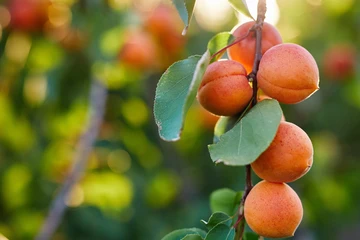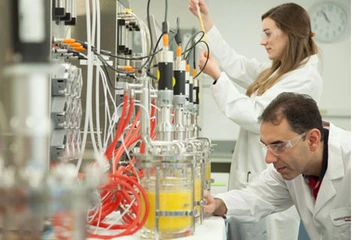Novozymes launches advanced enzymes to increase ethanol yields and plant profits
New trehalase products convert sugar that would otherwise be wasted. An average 100MGY corn ethanol plant can make up to $1 million in additional revenue.
Novozymes announces the launch of the Spirizyme® T Portfolio, an advanced suite of glucoamylase enzymes with trehalase and other yield enhancing activities that provide the most total sugar conversion in the industry.
Trehalase is an enzyme that converts trehalose, a type of sugar that cannot be fermented to ethanol, to glucose, which is easily fermentable. Trehalose makes up a significant part of the so-called DP2 peak, a measure of residual sugar in an ethanol plant. The more DP2 an ethanol plant can convert; the more ethanol it will produce.
Extensive plant trials of Spirizyme T showed that it reduced the amount of residual DP2 by up to 70 percent, the most in the industry. This would allow a 100 million gallons per year (MGY) plant to convert 11 million pounds of otherwise wasted sugar to approximately 700,000 gallons of additional ethanol per year. At current prices, this would add nearly $1 million in revenue for the plant.
Spirizyme T is available in three versions:
- Spirizyme Ultra T has the best DP2 reduction vs. cost
- Spirizyme Excel T has the lowest total residual sugar for short fermentation times
- Spirizyme Achieve T has the greatest ability to reduce residual starch and sugar.
“Reducing residual sugar is key to raise profitability at an ethanol plant. Don’t leave your sugar behind,” says Peter Halling, Vice President – Biofuel, at Novozymes. “The Spirizyme T portfolio provides significant DP2 reduction across the board and offers our customers choice. There are options for plants with specific operating conditions, and plants looking to achieve particular goals, such as shorter fermentation or increasing total yield.”
Maximizing potential with data and training
Novozymes Spirizyme T customers receive an extra layer of service through Novozymes’ Advanced Laboratory Services. A team of specialized scientists examine fermentation samples before and after plant trials to determine DP2 peaks and calculate trehalose conversion. Additional plant data are analyzed to identify areas where customers can operate their plant more efficiently.
Customers can get further support from Novozymes’ Bioenergy University, which provides customized education and training to help plant employees advance their skills and knowledge.
“Enzymes are only part of the equation. Analytical services and training can help turn plant data into actionable improvements”, added Peter Halling.
Spirizyme T will be available in North America immediately, followed by Latin America and Europe later in 2017.
Novozymes will be present at the 2017 National Ethanol Conference in San Diego, CA from February 20-22. Come meet us at the Solutions Quarter.
What is DP2?
Ethanol is produced by the fermentation of sugar by yeast. Commercial production of fuel ethanol involves breakdown of starch in corn or other feedstocks into simple sugars, fermentation of these sugars by yeast, and finally recovery of the ethanol and byproducts (e.g. animal feed).
Unfermented sugars go to waste, and ethanol producers are therefore interested in technologies that increase efficiency. After fermentation, ethanol plant managers will run High-Performance Liquid Chromatography (HPLC) tests to measure the amount of residual sugar. The test measures four types of sugars: DP1 (single sugar chains such as glucose), DP2 (two-sugar chains such as trehalose), DP3 (3-sugar chains) and DP4 (everything else).
Reducing these sugar “peaks” is key to maximize ethanol production. At a typical ethanol plant, approx. 70 percent of DP2 is unfermentable trehalose, so by converting trehalose to a fermentable sugar you can increase yield considerably. That is what the enzyme trehalase does.
Media contact



